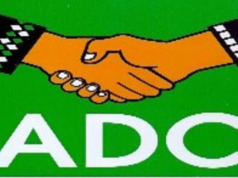In a strategic update announced June 25, 2025, Immigration, Refugees and Citizenship Canada (IRCC) broadened the list of fields eligible for the Post‑Graduation Work Permit (PGWP). This move aligns Canada’s immigration initiatives with emerging labour market needs, opening new career pathways for international students while tightening eligibility around reduced-demand sectors.
What changed and why it matters
IRCC has added 119 new non‑degree fields to the PGWP-eligible list while removing 178 programs that no longer align with labour shortages. The newly eligible fields largely fall within healthcare, education, and skilled trades—areas identified as critical gaps in Canada’s workforce.
This “rebalancing” effort reflects a responsive governance model: graduates in in-demand sectors now have enhanced opportunities, while those whose disciplines correspond to oversupplied roles no longer qualify for open post-graduation work permits. IRCC currently lists 920 eligible fields across its program catalogue (other sources report up to 929 fields, showing minor updates).
Grandfathering: fairness for those in progress
To minimise disruption, the new rules operate under a grandfather clause: students who applied for their study permit before June 25, 2025, remain eligible for PGWP—even if their program is later delisted. Moreover, graduates who applied for their PGWP before November 1, 2024, or those finishing degree-level programs (bachelor’s, master’s, PhDs), or flight school diplomas, are exempt from field-specific restrictions.

Expanded and narrowed fields: details by sector
Newly eligible sectors
IRCC’s update reflects a sharper focus on sectors where Canada faces staffing challenges:
- Education – Now an official category within PGWP eligibility. Programs such as French or biology teacher education, computer teacher education, and early childhood instruction are now included.
- Healthcare & Social Services – New additions include veterinary medicine (DVM), dental clinical sciences (DDS, DMD), and oral biology programs.
- Skilled Trades – Emerging fields such as construction management, CNC machinist technology, and cabinetmaking/millwork now qualify.
- STEM – The architecture field and various architecture-related programs were added.
These enhancements reflect IRCC’s drive to support essential professions—particularly in teaching, healthcare, and trades—where labour shortages are most acute.
Programs that are no longer eligible
Conversely, IRCC has removed programs less tied to labour demand:
- Transport – Major programs such as airframe mechanics and marine maintenance have been removed.
- Agriculture & Agri‑Food – Most related programs, including crop production and agricultural management, are now excluded.
- STEM/environmental disciplines – Fields like environmental studies and water resource management have been dropped.
- Certain healthcare/social services – Counselling and mental health support programs linked to non‑shortage occupations are no longer PGWP-eligible
- Trade fields – Occupations such as drywall installation and electrical equipment maintenance are no longer included.
These removals reinforce the PGWP’s realignment towards fields with genuine labour market demand.
What this means for students and educational providers
For prospective and current students
- New students applying permits on or after June 25, 2025, must ensure their program appears on the updated PGWP list—otherwise, they may lose access to the open work permit option.
- Degree graduates (bachelor’s level and above) retain full PGWP eligibility, regardless of subject area.
- Students already in process and those with PGWP applications in progress before November 2024 remain protected.
For colleges and program planners
Institutions must communicate clearly about program eligibility: marketing or advising tools should reflect the refreshed list. Students selecting programs not on the PGWP-eligible list risk losing crucial post-graduation work authorisation.
For the labour market and immigration policy
IRCC’s realignment underscores Canada’s immigration policy pivot, focusing on a sustainable labour supply rather than inflating international student numbers. By funnelling talent into education, healthcare, and trades, Canada aims to bolster economic resilience and address persistent workforce shortages.

How to check your program’s status
- Visit the IRCC website for the official PGWP field list.
- Locate your program’s CIP code via your institution (these are unique four-to six-digit codes identifying fields of study).
- Cross-reference your CIP code with the updated IRCC listing.
- Ask your institution’s international office for assistance if you’re uncertain.
Note that eligibility still hinges on meeting other IRCC criteria: graduation from a designated learning institution (DLI), study permit status, and, where applicable, language requirements (e.g. CLB 5/7 based on education level).
Conclusion
Canada’s June 2025 revision to PGWP eligibility—highlighted by the addition of 119 fields and removal of 178—marks a pivotal shift toward aligning international student outcomes with labour market needs. The introduction of education as a new eligible category underscores Canada’s heightened focus on its teaching workforce. Programs in healthcare and trades similarly benefit from the update.
Whether you’re planning studies in Canada or advising students, this update is more than administrative—it’s about realising post-graduation work dreams and supporting Canada’s long-term economic vitality. Prospective students should use the IRCC’s list to guide program selection, while policymakers view this as a tailored approach to international student immigration.
Join Our Social Media Channels:
WhatsApp: NaijaEyes
Facebook: NaijaEyes
Twitter: NaijaEyes
Instagram: NaijaEyes
TikTok: NaijaEyes
READ THE LATEST EDUCATION NEWS





